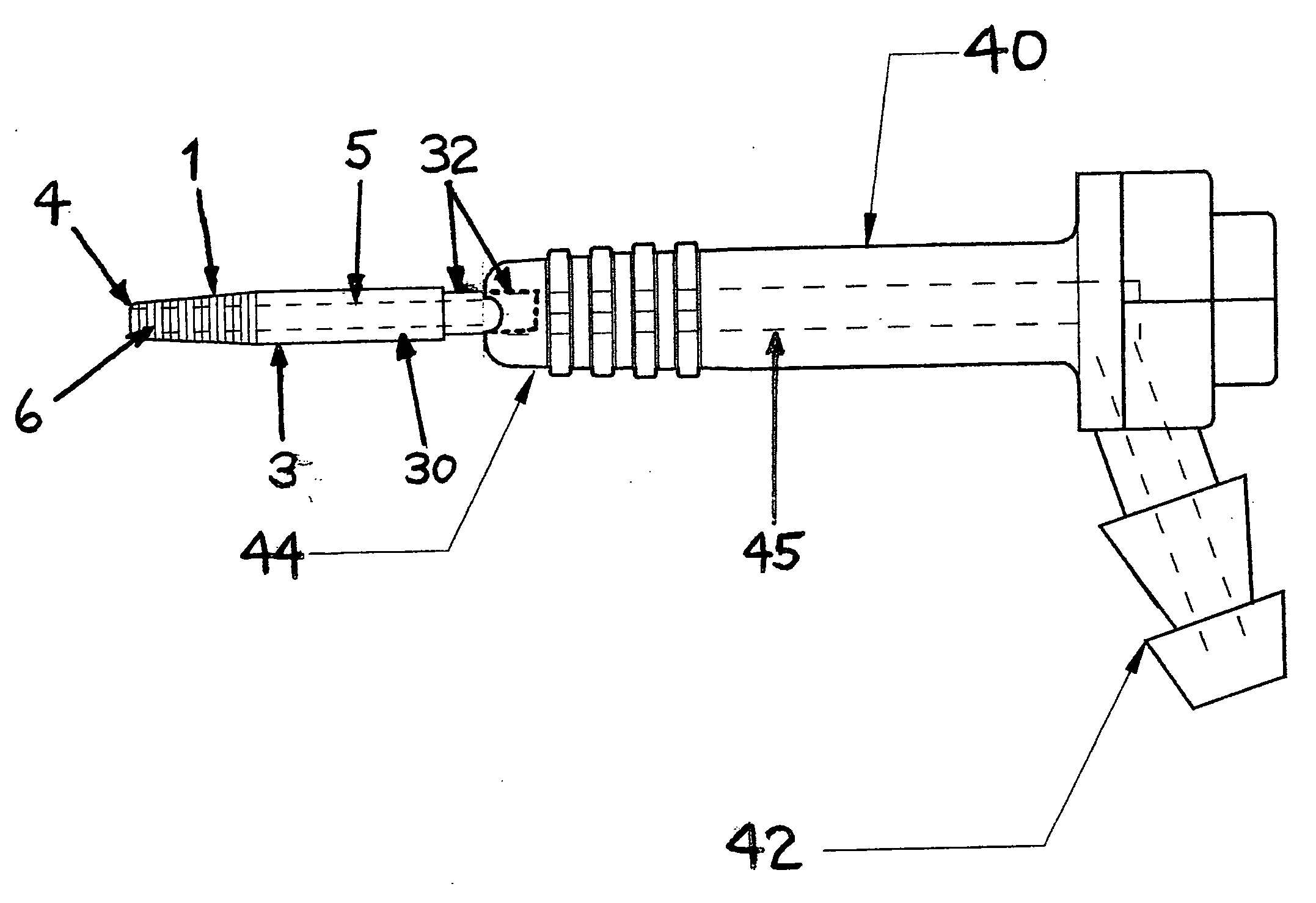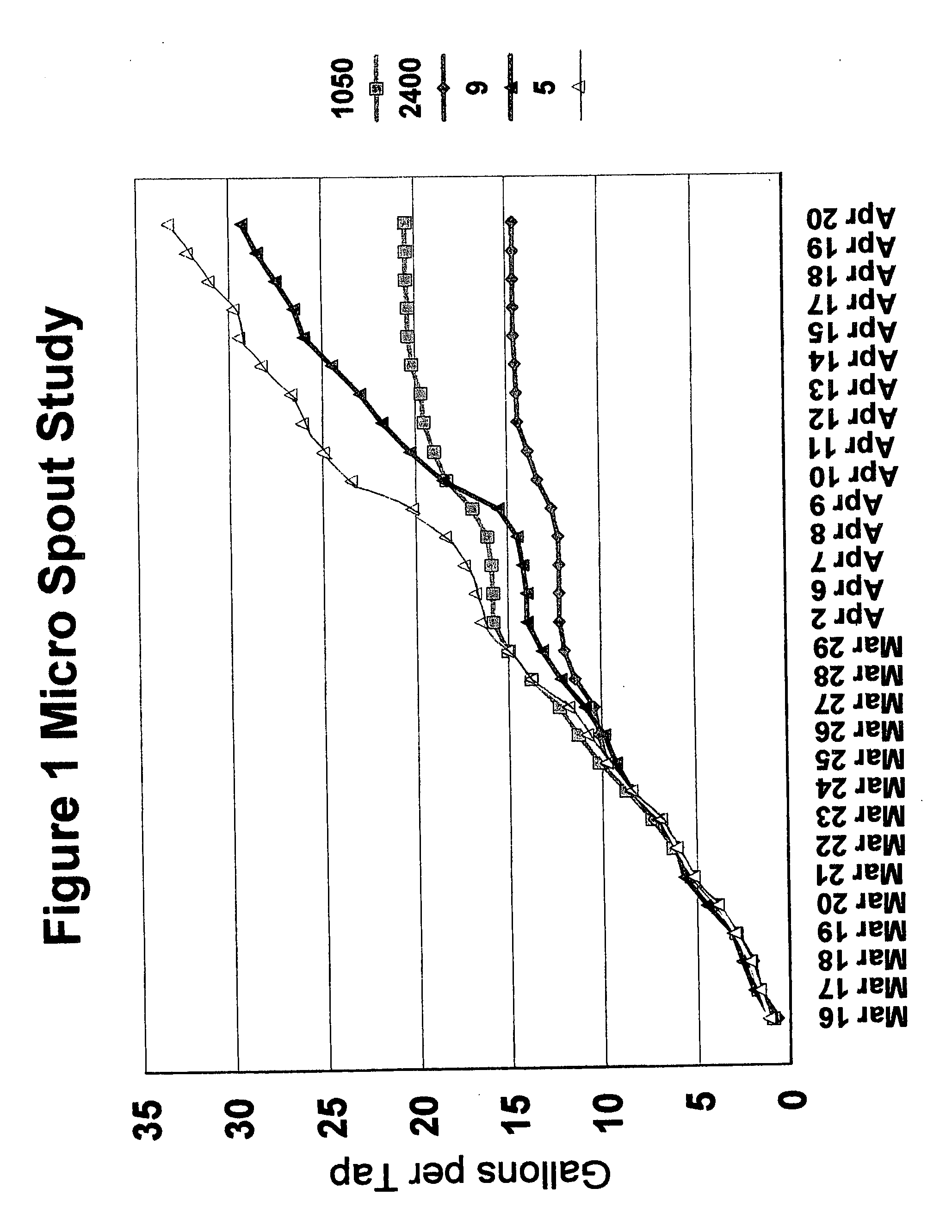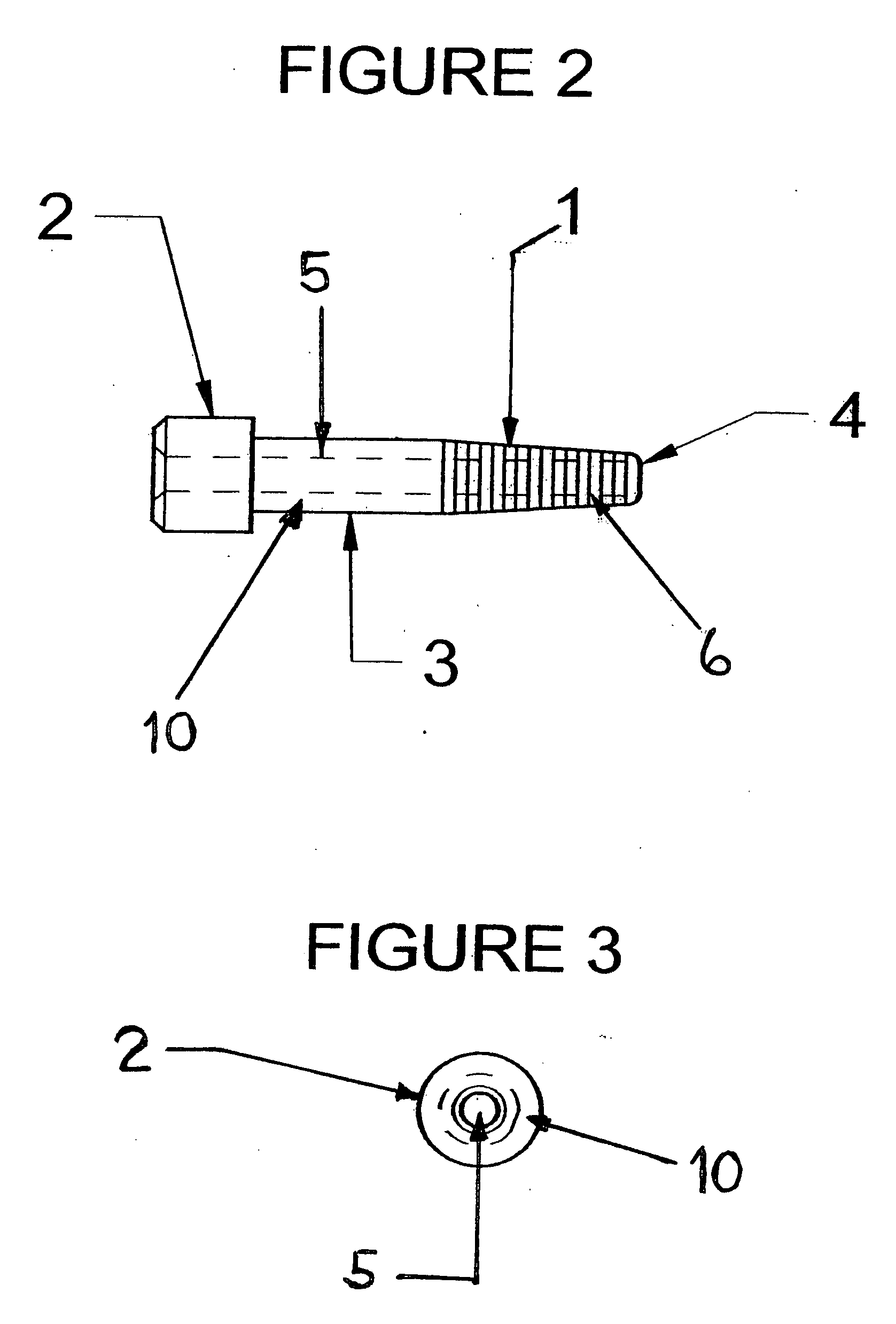Micro maple spout and method of use
a micro-spout and maple technology, applied in the field of micro-spout and method of use, can solve the problems of long-term damage and healing required from what remains a very invasive hole, the design is complex and difficult to use, and the tree is unable to heal ever, so as to achieve the effect of reducing the wounding of the tree tap hole, reducing the size of the hole, and reducing the number of trees
- Summary
- Abstract
- Description
- Claims
- Application Information
AI Technical Summary
Benefits of technology
Problems solved by technology
Method used
Image
Examples
Embodiment Construction
I. Preferred Embodiments
With reference now to the drawings, and in particular to FIGS. 1-6 thereof, a new and novel apparatus and method of use for a Micro Maple Spout embodying the principles and concepts of the present invention is depicted in these drawings as principally comprising a one piece design and is generally designated by the reference numerals 10 in the Preferred Embodiment, 20 in the Small-tube Collection Embodiment and 30 in the Retro-fit Embodiment.
General Description of Reference Numerals in the Description and Drawings
Any actual dimensions listed are those of the preferred embodiment. Actual dimensions or exact hardware details and means may vary in a final product or most preferred embodiment and should be considered means for so as not to narrow the claims of the patent.
List and Description of Component Parts of the Invention:
(1) Tap Taper (2) Hose Coupler (3) Spout Barrel (4) Tap Nose (5) Sap Channel (6) Annular V Grooves (10) Preferred Embodimen...
PUM
 Login to View More
Login to View More Abstract
Description
Claims
Application Information
 Login to View More
Login to View More - R&D
- Intellectual Property
- Life Sciences
- Materials
- Tech Scout
- Unparalleled Data Quality
- Higher Quality Content
- 60% Fewer Hallucinations
Browse by: Latest US Patents, China's latest patents, Technical Efficacy Thesaurus, Application Domain, Technology Topic, Popular Technical Reports.
© 2025 PatSnap. All rights reserved.Legal|Privacy policy|Modern Slavery Act Transparency Statement|Sitemap|About US| Contact US: help@patsnap.com



